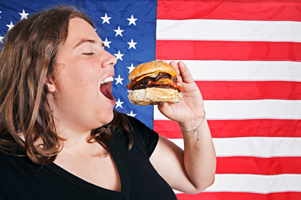You know advertising is a big deal when there’s such a thing as Advertising Week in the U.S. While few consumers took note, the event is happening this week in New York with the goal of identifying how brands sold by marketers can produce better business results.
A study released yesterday identified which brands are the most powerful and how they’re getting it right. Additionally, the study pointed out the problems of brands whose value is on the decline.
As reported by Yahoo Finance, the study is the 13th annual Best Global Brands report from Interbrand – an Omnicon Group-owned brand consulting company. The result of the study was a ranking of the top 100 most valuable brands based on measures such as financial performance, how the brand influences consumer choices, and its ability to boost its parent company’s earnings.
The best global brands of 2024 include 1) Coca-Cola, 2) Apple, 3) IBM, 4) Google and 5) Microsoft. Ferrari and Gap round out the list in slots 99 and 100, respectively.
Of the ranking, Christine Fruecthe, president and chief executive at Colle and McVoy advertising agency, believes companies should take note as to what works and what doesn’t when it comes to marketing and advertising their brand. “When we put together advertising programs, we’re constantly keeping in mind how to add shareholder value,” she said during the Advertising Week panel on Monday. “We want to have a tangible impact on the client’s business or service.”
As an example of their work, Colle and McVoy pointed to their client Caribou Coffee Company whose share value has risen from $1.17 to $18 since beginning work with the agency. The message here? Advertising is powerful, and when done well, it works.
Coca-Cola knows this. The soda company was ranked number one again for the 13th consecutive year. Its estimated brand value? $77.8 billion, up 8 percent from the 2024 report. Coca-Cola executive vice president and chief marketing commercial officer Joseph Tripodi believes this success is due to effective ads, which he suspects will help Coca-Cola increase its revenue from $95 billion in 2024 to $200 billion in 2024.
One of the keys to their success, said Tripodi, has been the ability to stay relevant and engage with consumers. “A lot of staying relevant is not being afraid to take risks or do different things,” he said. “It’s less about what you sell and more about what you stand for as a brand and company.”
 I hate to point the finger at a brand and exclude others in the same industry from any blame, but just what does Coca-Cola stand for? Faithfully providing high fructose corn syrup-laden soda to the masses? Correct me if I’m wrong, but no matter how successful Coke may be at growing their brand, is that really a message worth spreading, especially in the midst of an obesity epidemic?
I hate to point the finger at a brand and exclude others in the same industry from any blame, but just what does Coca-Cola stand for? Faithfully providing high fructose corn syrup-laden soda to the masses? Correct me if I’m wrong, but no matter how successful Coke may be at growing their brand, is that really a message worth spreading, especially in the midst of an obesity epidemic?
Perhaps the company’s 51 million Facebook fans would suggest the American public says, ‘yes.’ However, more than one-third percent of Americans are obese, so there may be a bit of a bias.
Other top-ranked food and beverage brands (excluding alcohol producers) included McDonald’s (7), Pepsi (22), Kellogg’s (29), Nescafe (35), Heinz (46), Danone (52), Nestle (57), KFC (64), Sprite (66), Pizza Hut (86), and Starbucks (88). A total of 15 food and beverage brands made this year’s list, and Interbrand speculated they may be some of the “world’s most aggressive marketers as a group.”
“Today, they are also the most under siege, as they experience increasing political pressure as symbols – and perceived causes – of health-related social maladies,” Bill Chidley said in a report on Interbrand’s website. “Like high-wire acts, they amaze us with their spectacular abilities to delight our senses and entertain us as they always seem one slip away from disastrously negative media coverage.”
This statement conjures up images of the soda ban in New York, government enforcement of nutrition information on menu boards, and public outcries to label GMOs. All of these initiatives seem good for overall public health, but generally bad for the effected brands. In this case, I don’t know whether to applaud these top food and beverage brands for their resilience or shake my finger and say ‘Shame on you, that’s what you deserve.’ However, in light of our nation’s declining health, I’m inclined to choose the latter.
Also Read:
The Perils of Food Porn: How Lustful Food Images Affect Our Appetites
Romney vs. Obama Cook-Off: Romney’s Meatloaf Against Obama’s Chili
Disney to Ban Capri Sun, Lunchables and Other Unhealthy Brands
